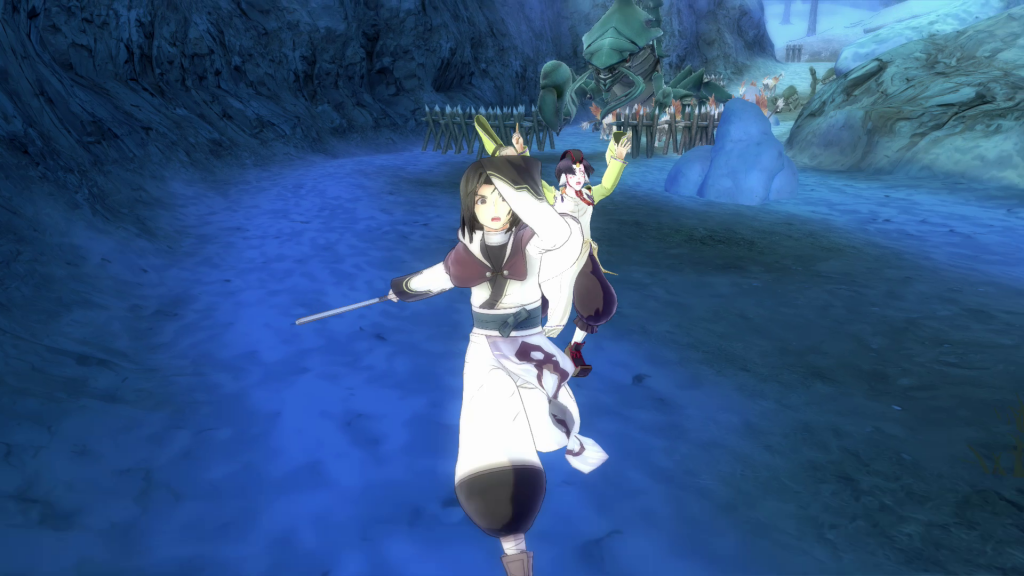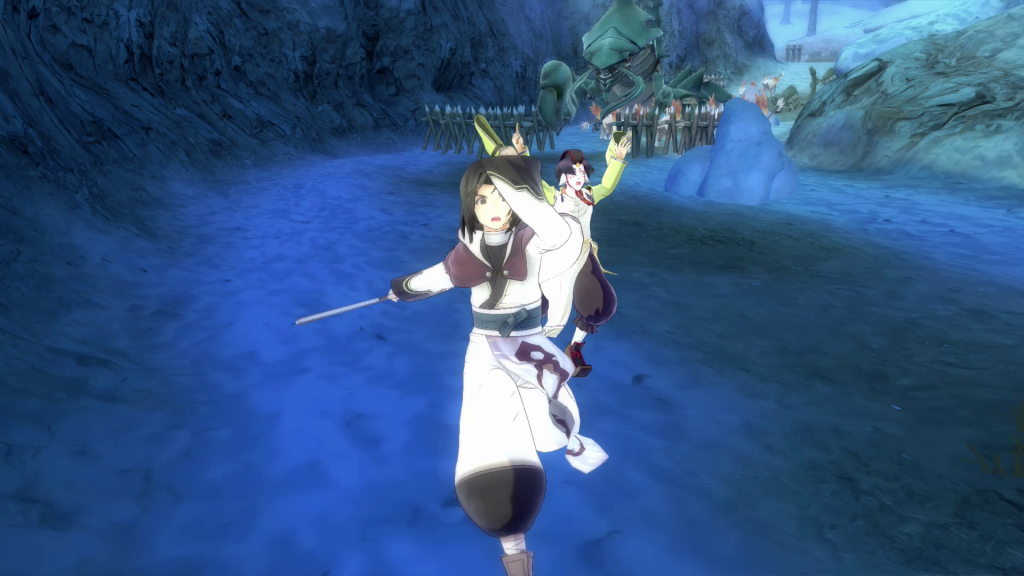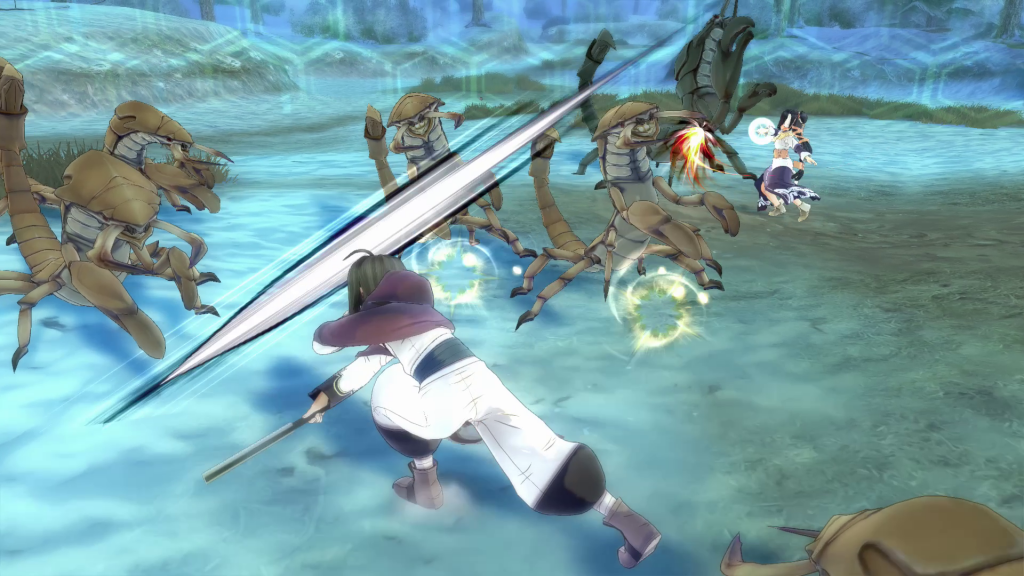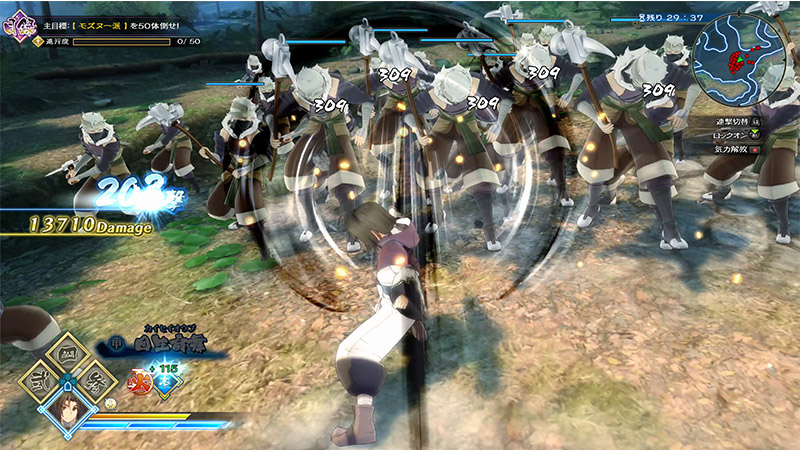Well, this is an unexpected twist. Utawarerumono is a visual novel series with some light tactical elements that’s been trundling along since way back in 2002. The first game spawned a sequel, an anime series, a manga, and a few drama CDs. Utawarerumono: ZAN represents the first foray for the series into action territory, so it’s taking a sideways leap, to say the least. Will this game manage to succeed in shifting genre, or will we all wish we were back reading the original visual novel?
The first thing to note here is that Utawarerumono: ZAN is based largely on the narrative of the PS3/PS4/PS Vita title Utawarerumono: Mask of Deception. That game’s plot was, appropriately enough for a story about an amnesiac, largely forgettable; storytelling isn’t really what Utawarerumono fans are in the series for (it’s an adult visual novel series, in case you didn’t know). Still, ZAN bases itself around this, and for the most part it’s fine.
That said, the game does take a slightly odd approach to its storytelling. Since it’s a musou Dynasty Warriors-esque action game, Utawarerumono: ZAN compresses the twenty-five-hour plus narrative of its source material down to around five or six hours (slightly more if you’re taking your time). This means important characters, plot points, and events tend to get glossed over or even skipped completely in favour of more action sequences.
That’s not necessarily a bad thing, though. Utawarerumono: ZAN knows what you want from it, and what you want from it is not a massive abundance of dialogue and plot. If you want that, you can go back to the original visual novels and revisit those. Instead, this game wants to be something new; an action-oriented take on the world and characters of its source material. In that, it does succeed, although there are some caveats.
So, what should you expect if you’re completely new to the Utawarerumono series? Well, in a nutshell, this is a story fairly heavy on its anime tropes. The narrative revolves around Haku, a man who wakes in a foreign land to find himself with no memory of who he is or how he got there. Haku must piece together his memories and forge his tale of destiny and battle. If you’re looking for a multi-layered and complex story, you won’t find it here, but it’s fine as straightforward action games go.
Of course, this being a Dynasty Warriors-style game, you’re not just playing as Haku. You’ve got 12 different characters to choose from, each of whom has their own unique abilities, strengths, and weaknesses. Over the course of Utawarerumono: ZAN’s story, you’ll use epic combos and special moves, unveil the story, and kill a whole lot of enemies. This kind of game is quite big on hordes, and ZAN is no exception on that front.
Essentially, what this means is that if you like the cathartic action offered by the Warriors games, you’ll find plenty to enjoy here. The combat is perhaps a tad simplistic; there isn’t much strategy in the moment-to-moment gameplay, and you’ll often find yourself mindlessly mashing your way through hordes upon hordes of enemies just to get to the end of the stage. The game does still have that all-important sense of weight and release to its combat, though, so you’ll enjoy your time with it.
Some of Utawarerumono: ZAN’s boss fights actually do shake up this formula a bit as well, which means you’ll need to use clever tactics and strategy to take them down. This is a tad jarring; if you haven’t needed to use any kind of smart thinking to get through the game up to that point, you might find yourself hitting a brick wall with one or two of the boss encounters. Still, it’s nice that the game wants to shake its formula up a little with these fights.
If there is a core criticism to be made of Utawarerumono: ZAN, it’s that formulaic feel. There’s just nothing here that’s inspiring or novel. Since the game is based largely off an existing property, it makes no attempt to get non-fans up to speed with its labyrinthine narrative and expects you to know what’s going on already. The 12 characters on offer here feel initially distinct, but after a while you’ll start to feel like the hack-and-slash combat isn’t using their diverse abilities to their fullest potential.
There’s also just not that much of Utawarerumono: ZAN to enjoy. As we said earlier, the game compresses a 25-hour story down to around six to eight hours, so once you’ve played through it once you’re not going to find many excuses to revisit the game. There are new pieces of equipment and items to obtain, but the gacha-style gambling system for obtaining them is frustrating and imprecise. It doesn’t use real money, but that just makes its implementation all the more bizarre.
All in all, Utawarerumono: ZAN is a serviceable hack-and-slash game. The combat is cathartic and fun, but it’s not particularly innovative or new, and the story is completely baffling if you haven’t experienced Mask of Deception (and redundant if you have, since it’s essentially the same story). If you’re not a fan of the series, this probably isn’t the best place to start. If you are, it’s an agreeable action game, but don’t expect too much from it.
Purchase Now.
This post didnt have a specific author and was published by PS4 Home.





